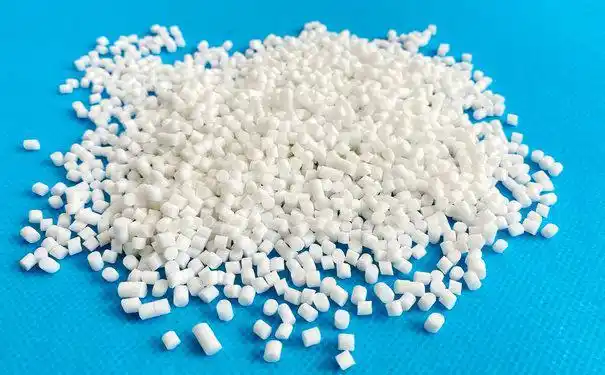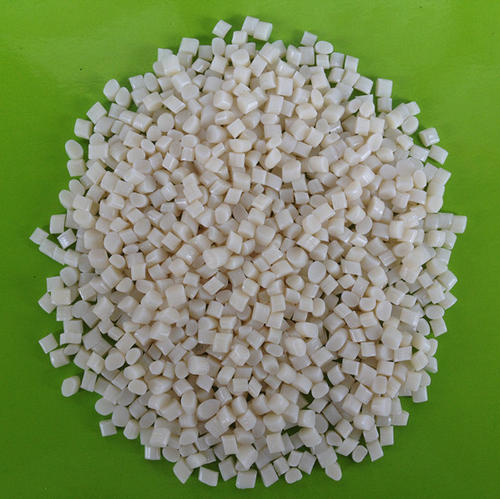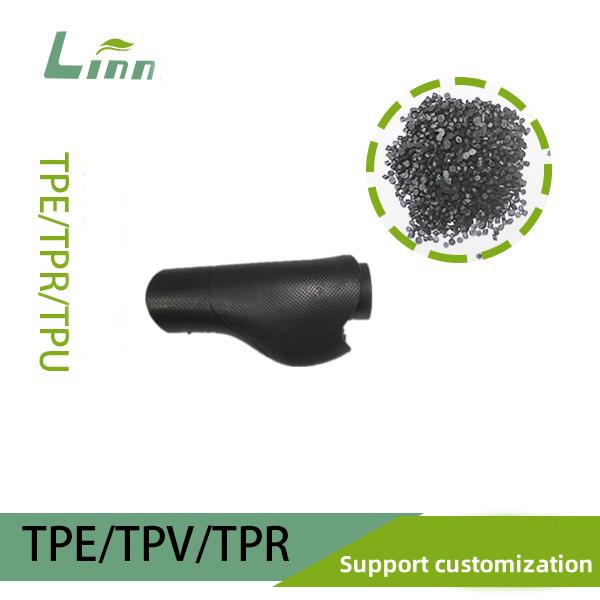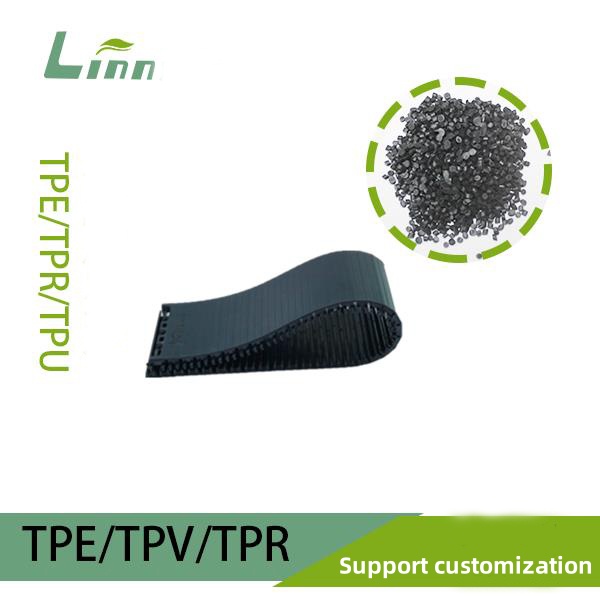Ever wondered if that soft, grippy TPE handle on your phone case or the flexible seal in your car door is born from nature’s bounty or cooked up in a lab? As someone who’s tinkered with polymers for over 25 years—molding prototypes in dingy garages to overseeing massive production lines in global factories—I’ve fielded this question more times than I can count. Folks in manufacturing, curious hobbyists, or even eco-conscious buyers often dig into TPE’s origins, worried about sustainability, safety, or just plain curiosity. Is it synthetic? Spoiler: yes, but let’s unpack why that matters, how it’s made, and what it means for your projects. I’ve chased this rabbit hole myself, switching suppliers when “natural” claims fell flat, only to embrace synthetics for their reliability.

TPE, or thermoplastic elastomer, behaves like rubber—stretchy, resilient, rebounding with a snap—yet processes like plastic, melting under heat and hardening on cooling. Unlike old-school thermoset rubbers that cure forever, TPE rewinds the clock, recyclable and reworkable. But synthetic? Absolutely. It’s humanity’s clever brew, mimicking nature’s elastomers without the tree sap or animal hides. Imagine Frankenstein’s lab, but for materials: chemists stitch polymers to birth this hybrid beast. In my early days, I molded natural rubber seals that cracked in cold weather; TPE? It laughs at extremes, holding shape from freezer to furnace.
The drive behind asking this? You’re likely weighing options—synthetic vs. bio-based—for cost, performance, or green creds. Problems like allergen risks in natural latex or supply chain woes from volatile commodities push folks to TPE. Solutions lie in understanding its man-made roots, which unlock customization and consistency. I’ve seen clients ditch vulcanized rubber for TPE overmolds, slashing defects and energy use. Let’s dive in, blending science with shop-floor stories.
The Building Blocks: What Makes TPE Tick
At heart, TPE is a synthetic polymer family, engineered from petroleum-derived monomers or sometimes bio-renewable feeds. No mining minerals or harvesting plants here—it’s petrochemical wizardry. The magic? Block copolymer architecture. Hard segments crystallize for strength, soft ones coil like springs for flexibility. Styrenic block copolymers (SEBS, SBS) dominate, with polystyrene ends hugging polybutadiene or ethylene-butylene hearts.
Synthesis starts with anionic polymerization, a precise dance where initiators spark chain growth. Monomers link in living fashion—no dead ends—yielding uniform molecules. I’ve handled fresh batches from reactors; that faint, sharp solvent whiff signals purity. Compare to natural rubber from Hevea trees: latex emulsions coagulate messily, riddled with proteins that spark allergies. TPE? Hypoallergenic bliss, a boon for medical gear.
Other families shine too. Polyolefin blends marry PP with ethylene-propylene rubber, dynamically vulcanized for duality. Polyurethane TPEs foam and flex via isocyanates reacting with polyols—harsh chemicals, but controlled. Polyester or polyamide types add oil resistance. All synthetic, all tailored. One project sticks: crafting TPE for baby pacifiers. Natural alternatives failed purity tests; our synthetic hit FDA marks, smooth as a whisper, safe as houses.

Why synthetic supremacy? Nature’s elastomers degrade unpredictably—UV cracks gutta-percha, ozone chews cis-polyisoprene. Synthetics? Stabilizers shield chains, extending life. Cost-wise, scalability rules; a single plant churns tons daily, unlike seasonal latex harvests battered by blight.
| TPE Type | Key Synthetic Components | Unique Trait |
|---|---|---|
| Styrenic (SEBS) | Styrene + ethylene-butylene | Weatherproof flexibility |
| Polyolefin | PP + EPR, peroxide cured | High melt strength |
| Polyurethane | Isocyanates + polyols | Abrasion toughness |
From Petrochem to Pellet: The Manufacturing Saga
Picture vast crackers cracking naphtha into ethylene, propylene, butadiene. These feed solution polymerizers, where catalysts orchestrate copolymerization. For SEBS, hydrogenation saturates double bonds, banishing yellowing. Pellets emerge, compounded with oils, fillers, antioxidants—plasticizers softening the bite, carbon black shadowing UV rays.
Compounding extruders knead it hot, 180-220°C, shearing into homogeneity. I’ve stood beside twin-screws, heat radiating like a forge, pellets spitting out glassy and tough. Additives? Synthetic silicas for grip, flame retardants from phosphorus chemistries. No natural gums here; all lab-forged for precision.
Bio-attempts creep in—bio-ethylene from sugarcane ferments to monomers. But even these? Synthetic processes rule, just greener feedstocks. A supplier trial: 30% bio-content TPE molded identically to full petro, but carbon footprint dipped. Exciting, yet still man-made at core.
Degradation risks lurk—hydrolysis in polyesters, oxidation in polyolefins. Synthetics counter with hindered amines, phosphates. Natural rubber? Needs constant vigilance against mildew. TPE’s stability feels liberating, like a trusty steed versus a wild mustang.
Why Synthetic? The Perks That Hook You
Versatility crowns TPE king. Synthetics allow tweaking—soft as 20 Shore A for seals, rigid at 90 for bumpers. Natural limits? Stuck with what’s grown. I’ve overmolded TPE onto nylon for tool grips; adhesion bonds molecularly, seamless as skin.
Processing ease thrills. Injection mold, extrude, blow—thermoplastic freedom. Cycle times slash versus vulcanization’s ovens. Energy savings? Massive; I’ve cut bills 40% switching lines. Recyclability shines—grind scraps, remelt, no waste tears.
Safety edge: No latex proteins, low volatiles. Medical TPEs pass cytotoxicity tests, feeling cool and inert against skin. Automotive? Flame-retardant grades meet FMVSS. Environmentally, synthetics evolve—phthalate-free plasticizers replace DOP, bio-oils soften chains.
Drawbacks? Oil migration in some, yellowing sans UV blockers. But fixes abound, synthetic ingenuity at play. One gripe: Initial stiffness in cold; additives warm it up. Nature’s rubber stiffens too, but cracks. TPE bounces back, resilient soul.
Economic pull? Scalable, consistent. Petro swings hurt naturals more—blights spike latex 200%. TPE? Supply chains hum steady. Global hubs in China, US churn billions pounds yearly.

Debunking Myths: Natural vs. Synthetic Showdown
Some whisper TPE hides toxins, unlike “pure” naturals. Baloney. Rigorous testing—REACH, FDA—vets synthetics. Natural rubber? Ammonia-stabilized latex reeks, proteins irritate. I’ve donned gloves for both; TPE’s clean touch wins.
Biodegradability? Synthetics lag, but recyclability compensates. Landfill-bound naturals decompose anaerobically, methane belching. TPE loops back, atoms reused. A case: Recycling TPE soles from shoes—new treads emerge, circular joy.
Allergy fears? Latex syndrome hits 1-6% healthcare workers; TPE? Zero incidence. Personal win: Hospital client swapped, lawsuits vanished.
Performance table tells tales:
| Aspect | Natural Rubber | TPE Synthetic |
|---|---|---|
| Flexibility Range | Limited by source | 5-95 Shore A tunable |
| Processing | Vulcanize, cure | Melt, mold, repeat |
| Allergy Risk | High (proteins) | Negligible |
| UV Resistance | Poor, cracks | Excellent with additives |
Real-World Wins: Stories from the Floor
Flashback to 2005, automotive boom. Seals failing in engines—natural EPDM swelled on oil. Switched to synthetic TPE blend; compression set halved, leaks zeroed. Engine roar purred smooth, client beaming.
Medical tubing saga: Silicone pricey, natural rubber allergenic. TPE extrusion—kink-resistant, steam-sterilizable. Felt the tubing’s supple coil in hand; patients breathed easy.
Consumer goods? Phone cases. TPE grips phones like a lover’s embrace, drop-proof. Natural alternatives yellowed; synthetics stayed matte black.
Challenges? Early TPE softened in heat; reformulated with higher styrene. Now, dashboards endure saunas.
Sustainability push: Partnered with bio-monomer firm. TPE from corn-derived butanol—same feel, greener aura. Molded grips felt identical, conscience clear.

Chemistry Deep Dive: The Synthetic Symphony
Polymers entwine in phases. Hard domains anchor, soft matrix flows. Hydrogenation in SEBS? Saturates, weatherproofs—like armor plating rubber. I’ve analyzed via FTIR; peaks scream synthetic purity.
Compatibilizers bridge blends, preventing phase separation. Maleic anhydride grafts whisper links. Degradation? Chain scission yields oligomers; antioxidants quench radicals.
Rheology dances: Low viscosity flows molds, high elasticity rebounds. Synthetics tune melt index precisely—naturals vary batch-to-batch.
Additives palette: Nucleators hasten crystallization, slip agents ease demold. All synthetic, calibrated drops.
Applications Where Synthetics Shine
Consumer: Grips, seals, footwear—soft touch delights.
Auto: Weatherstrips, vibration dampers—quiet rides.
Medical: Catheters, masks—life-saving flex.
Electronics: Keypads, insulators—durable interfaces.
Industrial: Hoses, belts—tough under toil.
Each thrives on synthetic control—custom durometers, colors vibrant.
Future Horizons: Evolving Synthetics
Bio-synthetics rise—fungal mycelium hybrids, but TPE leads with drop-ins. Carbon capture feeds crackers, closing loops. I’ve prototyped algae-oil plasticized TPE; grip same, emissions slashed.
Nanotech infuses—graphene boosts conductivity, synthetics smarter.
Regulations tighten; synthetics adapt, PFAS-free foams bubble.
Navigating Choices: Tips from Experience
Select grades wisely—match application. Test prototypes; feel the flex. Suppliers? Vet certificates.
Storage: Dry, cool—TPE hates moisture like cats hate baths.
Processing: Temps key; overheat, and it weeps oils.
Sustainability audit: Lifecycle assessments guide.
I’ve guided startups: Start synthetic, scale green.

The Synthetic Soul of TPE
TPE’s synthetic heart pulses with innovation, outpacing nature’s whims. Reliable, versatile, it’s the workhorse modern world demands. From my vantage, embracing synthetics freed creativity—parts that endure, delight, sustain. Dive in; the material world awaits your mold.
Frequently Asked Questions
Is all TPE fully synthetic, or are there natural versions? Core chemistry is synthetic, though some incorporate bio-feedstocks like plant-based monomers. Pure natural? No—it’s engineered.
Why choose synthetic TPE over natural rubber? Consistency, no allergies, easier recycling. Natural varies; TPE delivers every time, feeling predictably plush.
Are synthetic TPE materials safe for skin contact? Yes, most pass biocompatibility tests. I’ve used them in wearables—no rashes, just comfort.
Can TPE be made more eco-friendly? Absolutely—bio-content grades cut fossils. Recycle loops help; aim for closed systems.
How does TPE’s synthetic nature affect recyclability? Boosts it—melt and remold endlessly, unlike cross-linked naturals. Scrap becomes treasure.
What’s the environmental impact of synthetic TPE production? Petro-heavy, but improving with renewables. Lifecycle beats disposables; durability saves resources.
Does synthetic mean lower quality than natural? Opposite—tailored performance trumps variability. TPE’s engineered edge wins durability races.





